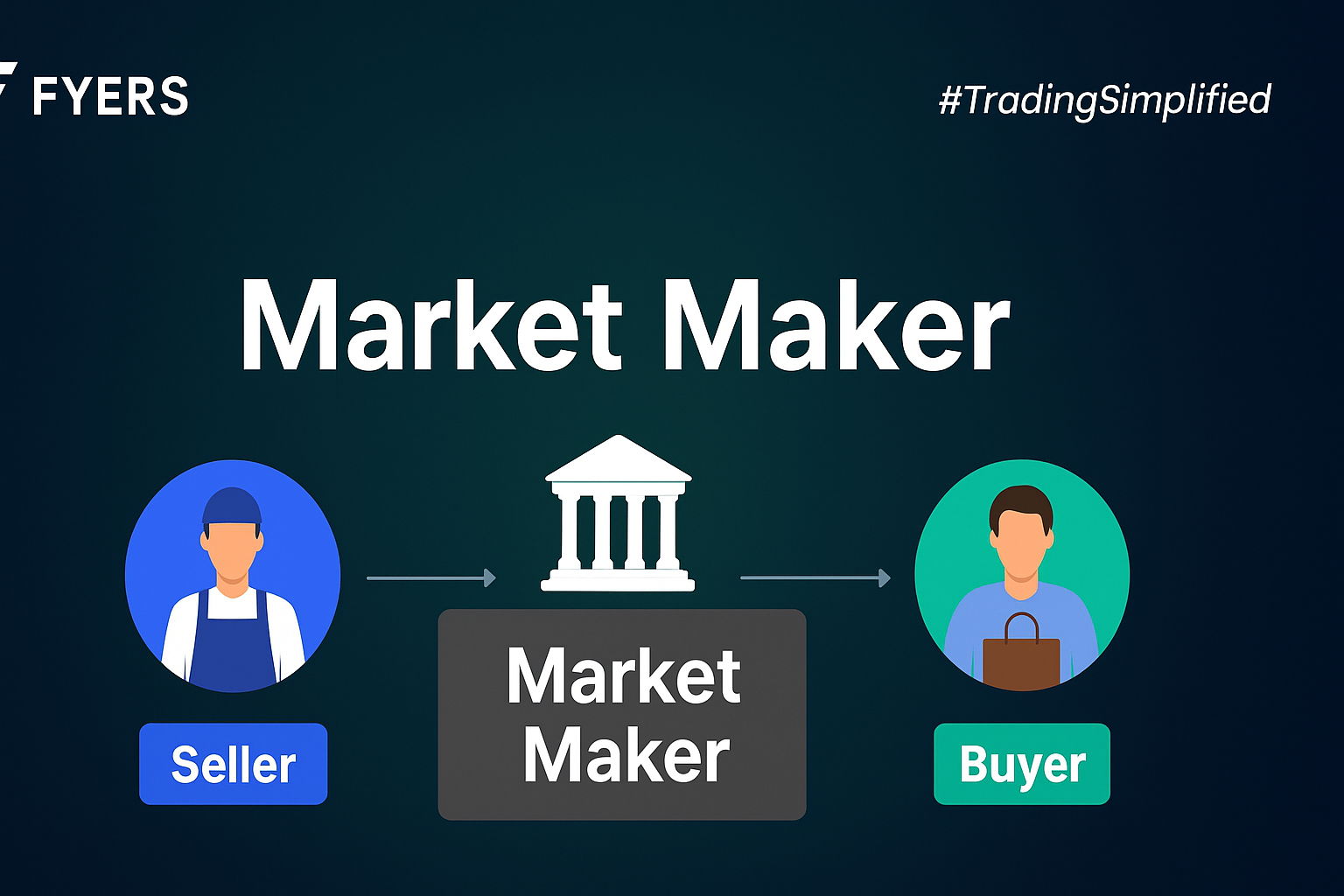

 25 Aug, 2025
25 Aug, 2025
 3 mins read
3 mins read

In every financial market, there are invisible yet crucial players who ensure trading runs smoothly. These participants are known as market makers, or more broadly, liquidity providers. Their role goes beyond just trading; they maintain balance in the system, reduce volatility, and allow investors to buy and sell without unnecessary delays.
At the core, market makers (liquidity providers) are professional traders or institutions that continuously quote both buy (bid) and sell (ask) prices for financial securities. By doing so, they guarantee that there is always a counterparty for a trade, making it easier for retail and institutional investors to execute orders.
In simple terms, these designated dealers create liquidity—ensuring the market does not freeze when trading activity slows.
In stock exchanges and derivatives markets, liquidity providers play a crucial role:
Narrowing spreads: By providing constant buy/sell quotes, they help maintain tight bid–ask spreads.
Stabilising markets: During high volatility, authorised participants absorb shocks by fulfilling large orders.
Supporting derivatives trading: In stock option trading, professional traders make sure that contracts remain tradable even when demand fluctuates.
Without these intermediary traders, buying or selling shares could become extremely inefficient.
Liquidity providers operate by quoting both sides of the trade:
Bid price: The rate at which they are willing to buy.
Ask price: The rate at which they are willing to sell.
The difference between these two, known as the spread, is how designated dealers typically earn profit. For example, if a stock’s bid price is ₹100 and the ask price is ₹101, the liquidity provider makes a small margin while ensuring transactions are executed instantly.
A market making strategy focuses on high-frequency trading, small margins, and large volumes. Common approaches include:
Quoting continuously – ensuring there are always buy/sell offers.
Hedging positions – reducing exposure to sudden market swings.
Balancing order flow – ensuring there are enough buyers and sellers at any point.
These professional traders rely on advanced algorithms and data-driven analysis to maintain consistency and efficiency in financial markets.
The terms liquidity providers and market takers are often confused. The difference lies in their function:
Liquidity providers (makers): Post orders in the order book, ensuring supply and demand.
Market takers: Accept existing prices by executing trades against those posted orders.
In essence, price setters ensure stability, while market takers rely on them to complete trades.
Without designated dealers, trading would become chaotic:
Bid–ask spreads would widen.
Investors would face difficulty entering or exiting trades.
Market volatility would increase sharply.
By ensuring constant availability, institutional participants allow smoother price discovery, making the stock market more efficient for everyone—from retail investors to large funds.
Despite their critical role, liquidity providers face several risks:
Volatility shocks: Sudden news or economic events can create large imbalances.
Inventory risk: Holding too many securities when prices move unfavourably.
Regulatory challenges: Tighter compliance rules for designated dealers in stock and derivatives markets.
Managing these risks requires advanced systems, high-speed trading platforms, and strong capital reserves.
While they often work behind the scenes, market makers—or liquidity providers—are the backbone of financial markets. They maintain order, enable smoother trades, and provide stability in both equities and derivatives. By narrowing spreads and ensuring there’s always a buyer or seller, these hidden players are indispensable to the functioning of modern markets.
They are liquidity providers—professional traders or institutions—that ensure there is always a buyer and seller available in the market.
Primarily from the bid–ask spread, and sometimes from incentives offered by exchanges.
A strategy where liquidity providers continuously quote buy and sell prices, hedge risks, and profit from spreads while keeping markets efficient.
Liquidity providers (makers) post quotes, while market takers execute trades against those quotes.
Calculate your Net P&L after deducting all the charges like Tax, Brokerage, etc.
Find your required margin.
Calculate the average price you paid for a stock and determine your total cost.
Estimate your investment growth. Calculate potential returns on one-time investments.
Forecast your investment returns. Understand potential growth with regular contributions.